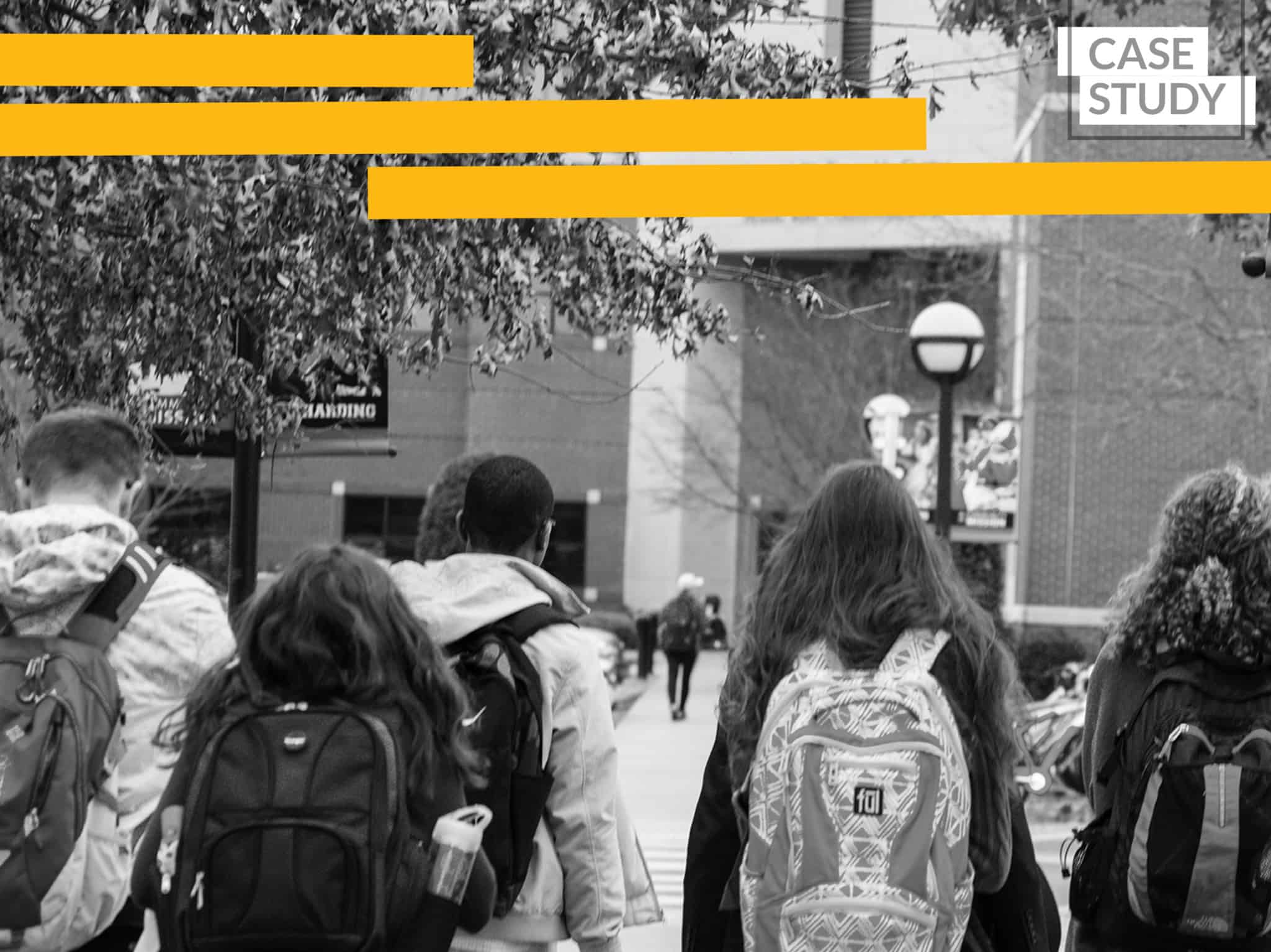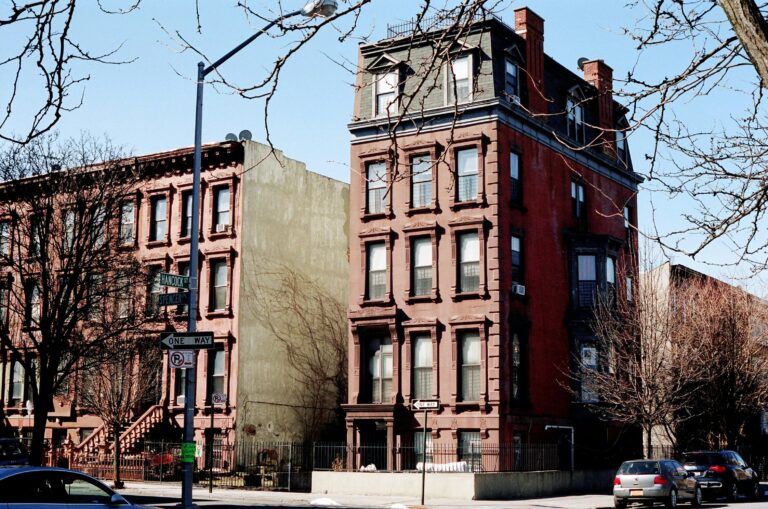On June 25, 2020, Mayor Lori E. Lightfoot announced the launch of Chicago Connected, a groundbreaking, multi-year, public-private partnership to close Chicago’s digital divide and ensure that CPS students and their families have the Internet in their home for remote learning.
1 | Firsthand Accounts Expose Digital Inequities
On Friday, April 17, 2020, Illinois extended its mandated statewide school closures through the remainder of the 2019-20 school year in response to the public health crisis surrounding the COVID-19 pandemic. With the shift to remote learning, more than 100,000 CPS students did not have an active Internet connection at home and were unable to attend classes virtually.
Inspired by the firsthand accounts of parents struggling to get their families connected to remote learning and other essential supports, Kids First Chicago partnered with the Metropolitan Planning Council to study the problem. The report they released, Digital Equity in Education in the Coronavirus Era, showed the city’s widespread connectivity gaps and called upon Chicago leaders to act.
The report found that roughly 1 in 5 primarily Black or Latinx/a/o children under 18 lack in-home Internet. In some communities, primarily on the South and West Sides, nearly 50% of households with school-age children do not have in-home broadband. These communities are also the hardest hit by food insecurity, unemployment, and housing challenges, and are without access to vital information to help address those same issues.
2 | A Groundbreaking Public-Private Partnership
Equipped with data, leaders across the city recognized that the digital divide was not a problem created by COVID, but one the pandemic has exacerbated. Spurred by Founder and CEO of Citadel Ken Griffin, philanthropists worked with agency and nonprofit partners to develop a plan that would go beyond stop-gap measures. They envisioned a sustainable solution that could endure for all of Chicago’s most vulnerable students, enhancing equal access to education and ancillary benefits. A citywide initiative to close the connectivity gap would only be possible with strong philanthropic partners to support the work in the early years.
Chicago Connected is a first-of-its-kind partnership program that provides free high-speed Internet service to approximately 100,000 CPS students.
The $50 million program is one of the most extensive and longest-term efforts by any city to provide free, high-speed Internet to increase students’ connectivity.
Program Partners:
City of Chicago
Ensures the project is consistent with the Mayor’s broader vision for the city and provides strategic leadership and financial management. It also acts as the primary liaison with the funding community and external agencies.
Chicago Public Schools
Responsible for the program’s day-to-day operations: eligibility selection, parent support, data movement, and reporting.
Kids First Chicago
Represents the voice of the community and is responsible for performance reporting and facilitation between all Chicago Connected organizations and the funding community.
United Way of Metro Chicago
A fiscal agent that ensures ISPs receive payment for Internet service delivery and coordinates payments to other third-party vendors on behalf of Chicago Connected.
Children First Fund
A fiscal agent that manages relationships and disburses funds to Chicago Connected’s partnering community-based organizations.
Internet Service Providers
Ensures connectivity and builds on best practices in digital literacy and skill development.
Community-Based Organizations
Community-based organizations (CBOs) are critical partners in the Chicago Connected initiative. CBOs are responsible for conducting outreach to families to support program enrollment, providing newly-connected households with digital literacy and skills development training, and connecting homes with other critical resources.
The first two years of Chicago Connected will be majority funded by philanthropic partners, including $7.5 million from Ken Griffin, Founder and CEO of Citadel, $5 million from Crown Family Philanthropies, $2.5 million from the Chicago Community COVID-19 Response Fund (through Chicago Community Trust and United Way of Metro Chicago), $2 million from Illinois Tool Works, $1.5 million from the Pritzker Traubert Foundation, $500,000 from the JPB Foundation, and $250,000 from the Joyce Foundation.
In addition, a joint commitment of $750,000 from President Barack Obama and Mrs. Michelle Obama, the John D. and Catherine T. MacArthur Foundation, and the Chicago Community Trust to the Children First Fund, the independent partnership and philanthropy arm for Chicago Public Schools, will support efforts by community-based organizations on the South Side.
3 | Sponsored Service: A New Approach To Connecting Students
According to Census data, an estimated 100,000 students lack access to high-speed Internet in Chicago, which is defined as 25 Mbps download and 3 Mbps upload by the Federal Communications Commission. Chicago Connected adopts a sponsored service model, providing high-speed Internet to households for four years by directly paying for Internet service for families most in need.
While the program is primarily funded by donations from philanthropic partners and district and city funds, $5 million from the CARES Act will also go toward the program. Donations will cover the first two years of the program, with CPS paying for years three and four.
The fundraising effort’s success has ensured that the program is 100% free to eligible households – meaning no out-of-pocket expenses or installation fees for families who participate in the program.
4 | Determining Eligibility
The model is designed to ensure students and families with the highest level of need will be prioritized to receive service first. All eligible households will receive up to four years of high-speed Internet, which will be assessed on an annual basis. Eligible households for the initiative are identified using six priority indicators and data from ISPs. Priority indicators include:
- Students eligible for free lunch
- Students with special needs
- Students experiencing homelessness
- Students living in communities with the highest – hardship based on the UIC hardship index
- Students in temporary living situations
- Students who are enrolled in summer school
5 | Identifying Students Who Lack Home Access
Like many home access programs, an essential first step for CPS in connecting students for remote learning has been identifying those who lack access to devices and high-speed Internet.
Engagement data from CPS outreach in spring 2020 showed that while overall more students regularly partook in digital classes as remote learning went on, Black and Latinx minorities and low-income students were increasingly falling behind. Notably, CPS faced further challenges, as it was unable to contact more than 2,000 students, and 30% of their student address data was inaccurate.
Incomplete datasets are common pitfalls for many school districts when assessing home digital access needs, but CPS worked collaboratively with the city and ISPs to correct household addresses.
With improved data, the team worked with Comcast, RCN, AT&T, and WOW, to analyze and update address-level data and gain insight into connectivity options for CPS student households. With the support of their ISPs, they were able to answer three crucial questions:
- Is high-speed Internet being delivered at a specific address
- What package (upload and download speeds) is being delivered
- Can an ISP readily service an address with no current subscriber?
6 | Choosing ISP Partners
As the program aims to serve more than 60,000 households where lack of service is impeding learning, reliability and affordability were key factors in selecting ISP partners. In May 2020, Chicago Connected engaged ISPs early in designing the initiative and sought to pre-qualify multiple providers who could provide fixed, low-cost broadband services and related customer support to eligible households for four years, re-evaluated annually.
Request for Proposal (RFP)
Based on existing infrastructure and service capabilities, an RFP was issued for ISPs to offer households a best-possible package that ensured participating households (who are able to have wired Internet service at their address) can receive Internet service speeds of up to 25 Mbps download and 3 Mbps upload. This speed level is necessary to ensure quality video streaming and video conferencing for multiple devices.
Eliminating Risk for ISPs
By guaranteeing participating providers would be paid through a single approved fiscal agent in a sponsored service program model, the program enables responders to draw from a new customer segment while eliminating the risk of default during the program.
Chicago Connected selected Comcast Internet Essentials program and RCN as ISP partners. Together, they made key commitments to increase participation for eligible families:
- Families who qualify for the program will be offered free Internet, and those with existing low-cost Internet packages will have the option to transition to this program if they choose.
- The program is free of charge; there will be no fees for installation or equipment, equipment, and families will not be directly billed for monthly services.
- Families who enroll in the program will not receive upsells.
- Families will not be required to provide sensitive information (e.g., SSN, or background or credit checks).
- Should a household no longer be eligible for the program because a student has graduated from CPS or experiences other changes to their eligibility, the ISP will not bill them for continued service without their permission.
- Families who enroll will receive a digital welcome packet, including technical and digital literacy support materials.
- Active participation in program outreach and support for family digital equity programs and classes
Since the coronavirus pandemic hit, CPS has also given out over 128,000 devices and thousands of hotspots to support remote learning. While the initial phase of Chicago Connected will provide wired Internet access, it will also extend hotspot services for students in temporary living situations for up to four years. T-Mobile is supporting this component of the program and developing solutions in areas where traditional wired access is not a viable option.
7 | Connecting Students For Remote Learning This Fall
Outreach
CPS has a robust communications plan to contact families, using several communication waves that prioritize those most in need. Each eligible household receives a general robocall, robotext, and flier to raise awareness of the program, followed by U.S. Postal mail and emails containing their specific activation codes.
___________________________________________________________________________________________________
EXAMPLE OUTREACH MATERIALS:
- Robocall & text script example (template)
- Program flier example (template)
- Activation mail/email example (template)
- U.S. Postal and email notice to hotspot customers (template)
- U.S. Postal and email notifications to existing customers (template)
___________________________________________________________________________________________________
DOWNLOAD THE CHICAGO CONNECTED TOOLKIT
Onboarding & Management
Ensuring all Chicago Connected participants experience a high level of customer support is essential for the program’s success. Participating organizations are each responsible for ownership of different elements of the customer experience:
| ISP | CPS | CBO |
|---|---|---|
| Installation scheduling or rescheduling Service requests Change of address requests Billing matters unrelated to Chicago Connected |
General questions on the program CPS device issues CPS remote learning platform questions |
Confirmation of installation Customer satisfaction surveys Digital literacy support Skills development training |
The initiation of CBO involvement with the customer occurs after a program participant provides consent to CPS to have their information shared. CBOs contact the household to survey installation experience while also providing newly-connected households with digital literacy training and support. Using content from Chicago Public Library as well as supplementary curricular offerings, the training is designed to:
- Serve a wide variety of household needs and interests.
- Equip households with the power to create an individualized learning plan, (e.g., developing online safety and job readiness skills, accessing telehealth resources, completing the census online, and registering to vote).
- Connect newly-connected households to critical support services, including food, housing, employment, and healthcare assistance.
Closing the digital divide is a monumental task, but Chicago Connected is successfully providing free Internet to students who need it most. While other cities and states have helped provide high-speed Internet access for shorter time frames (ranging from 60 days to six months) to help families through the COVID-19 crisis, Chicago Connected delivers a sustainable and permanent solution. To date, no other city or school district in the nation has provided high-speed Internet access to students over several years.
The creation of this comprehensive connectivity program is truly groundbreaking. In closing the city’s digital divide, Chicago Connected is not only eliminating broadband accessibility as a barrier to digital learning but providing a roadmap for other cities and school districts to follow.
Learn more at cps.edu/chicagoconnected and kidsfirstchicago.org/chicago-connected




